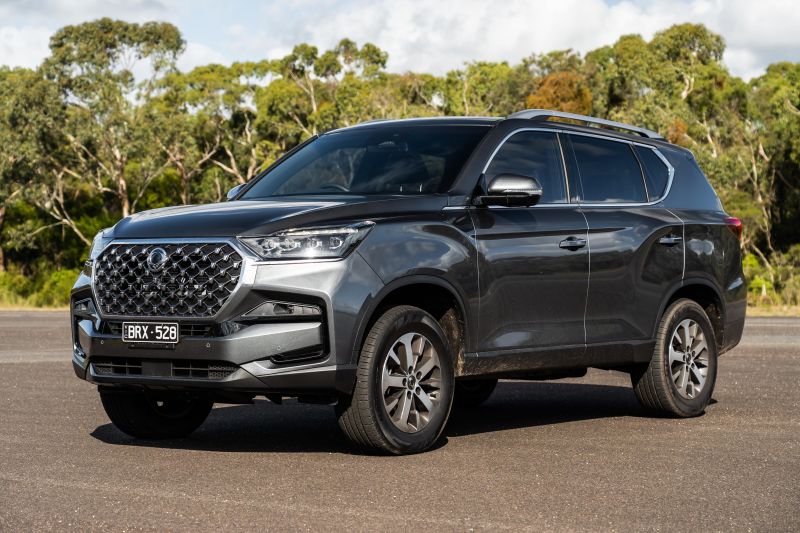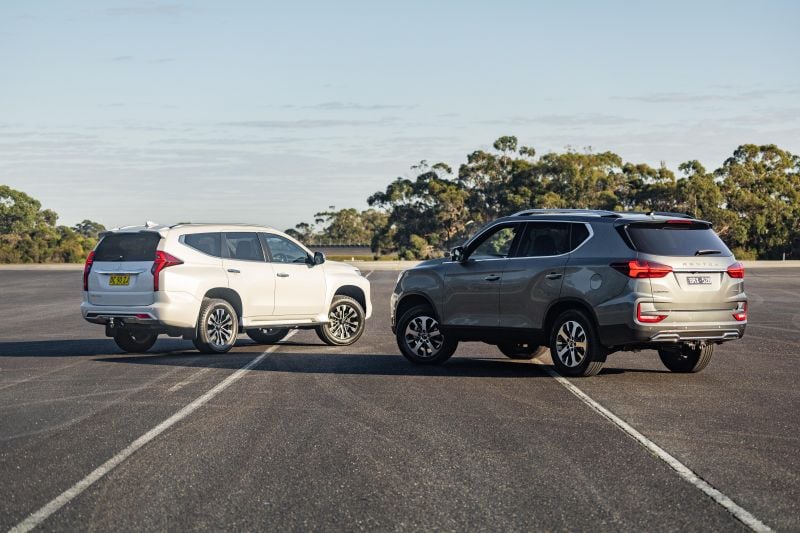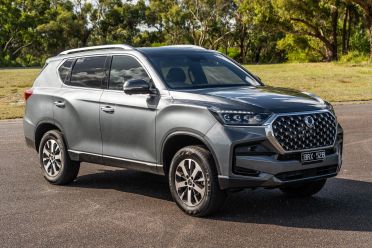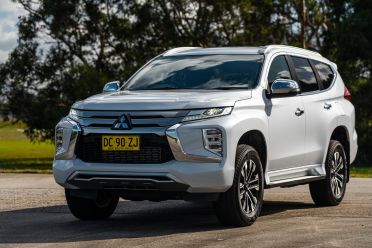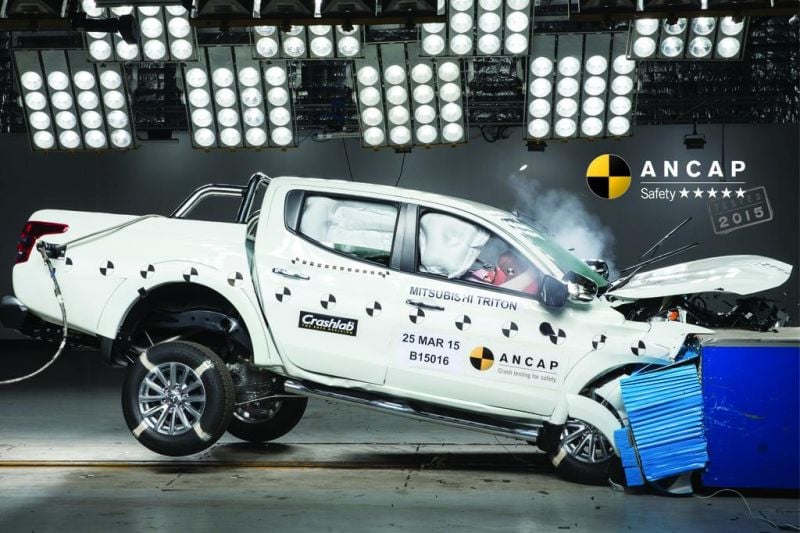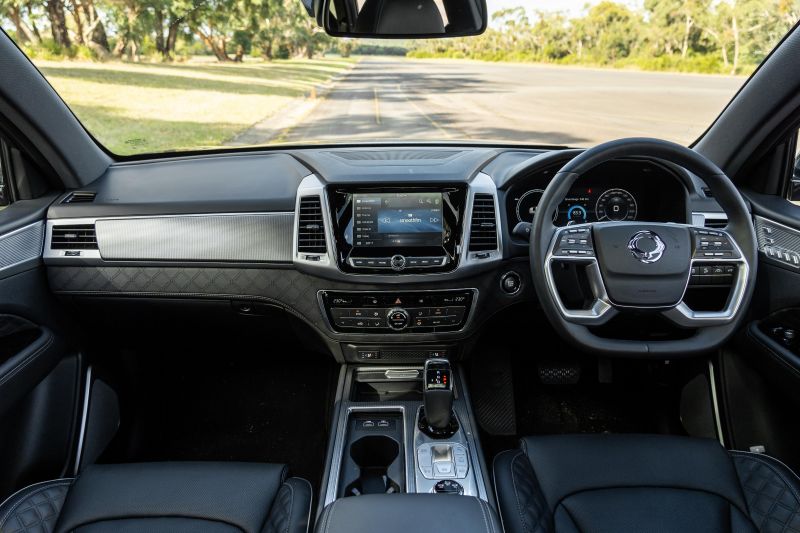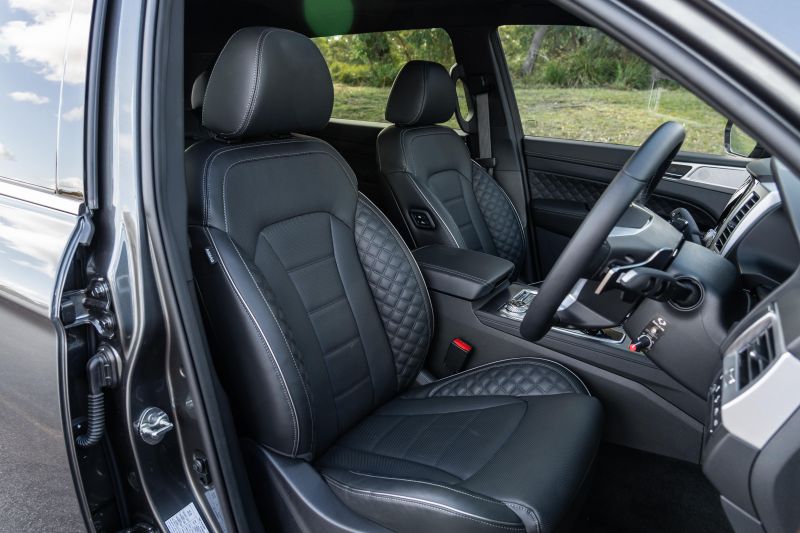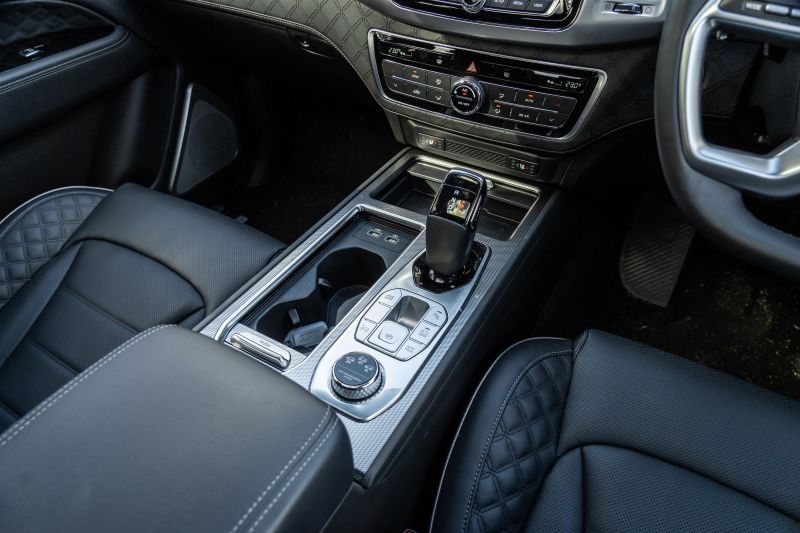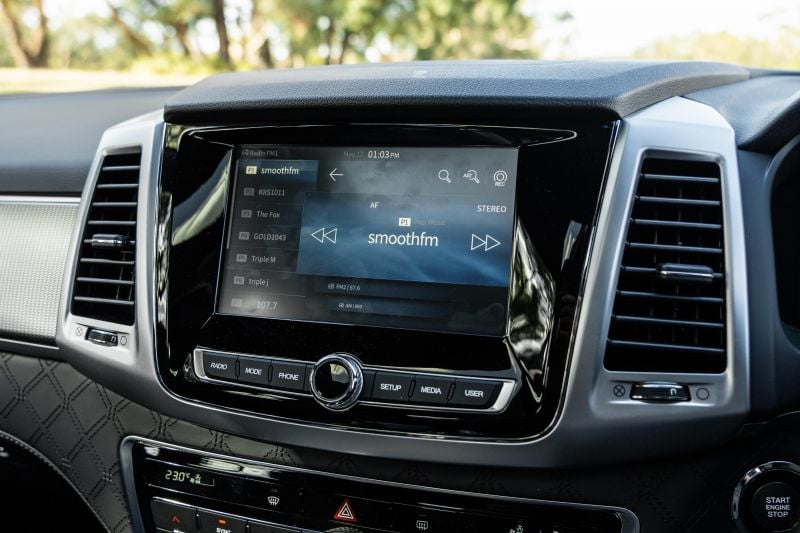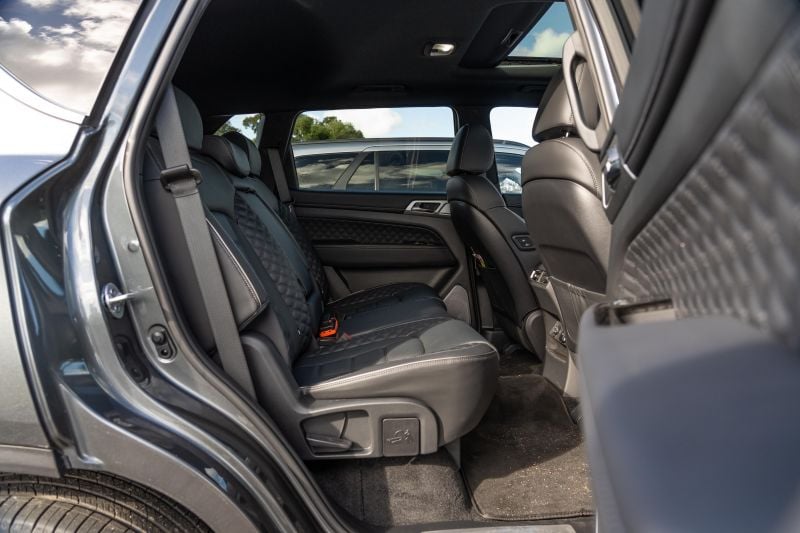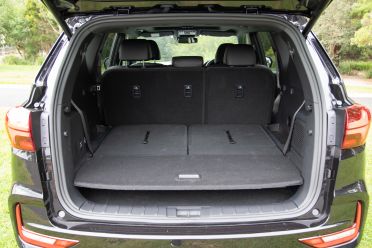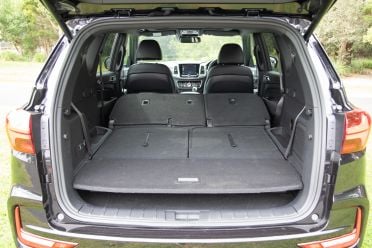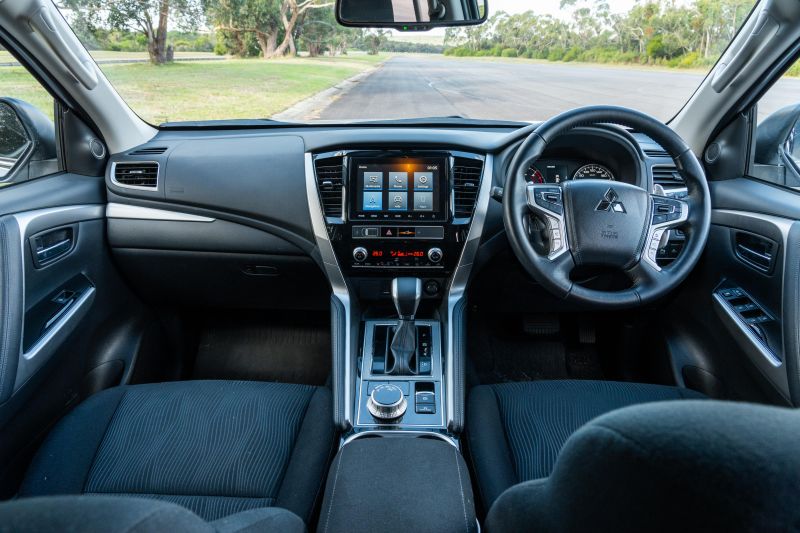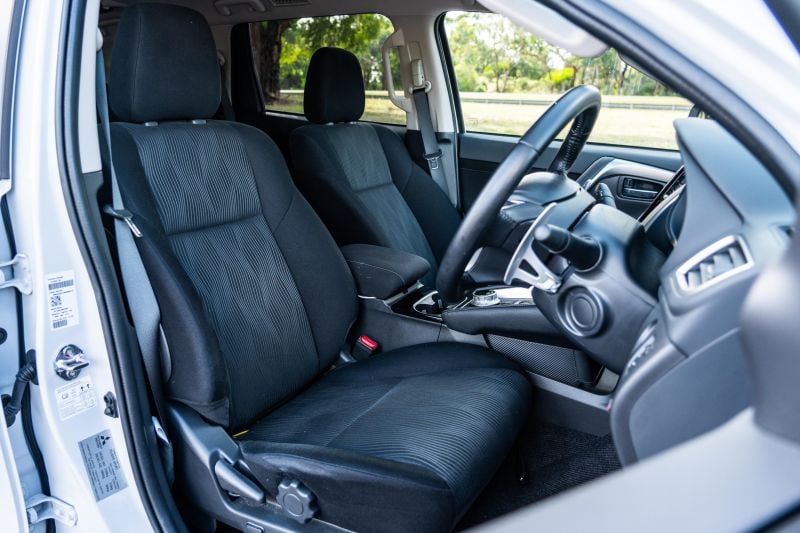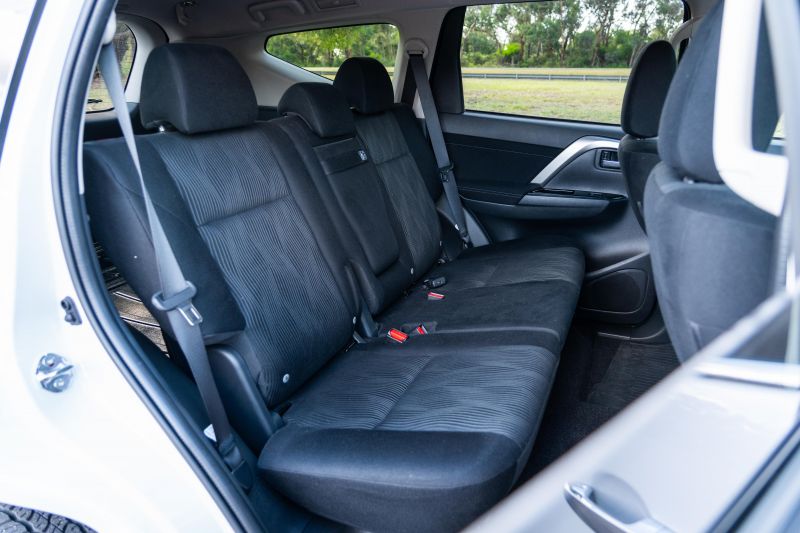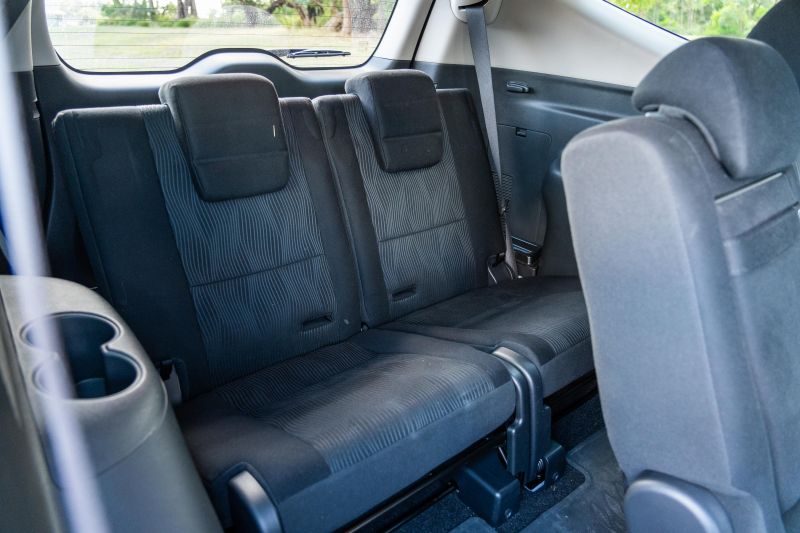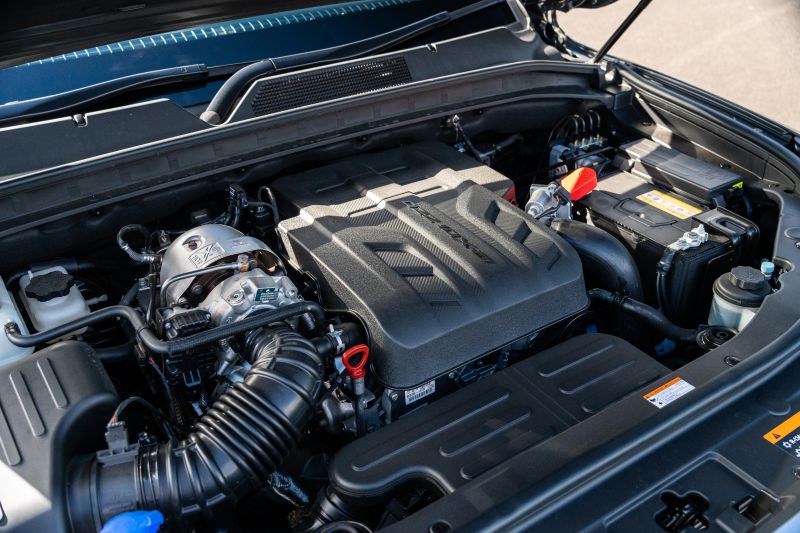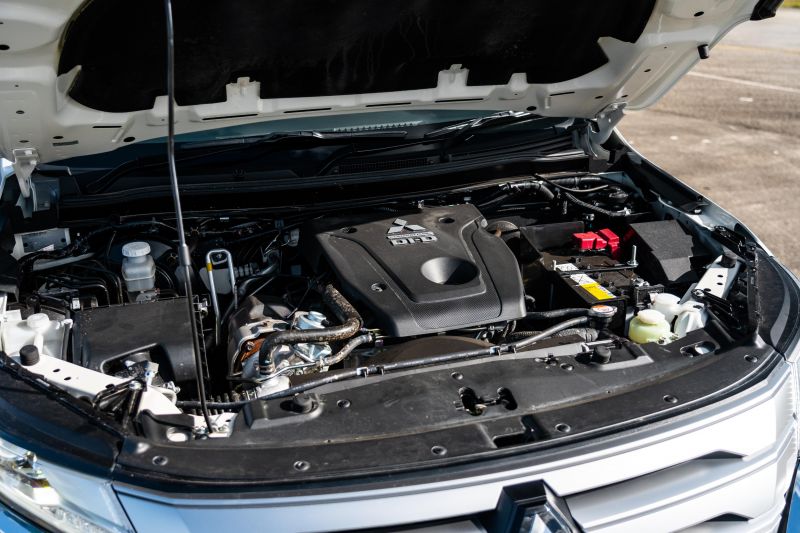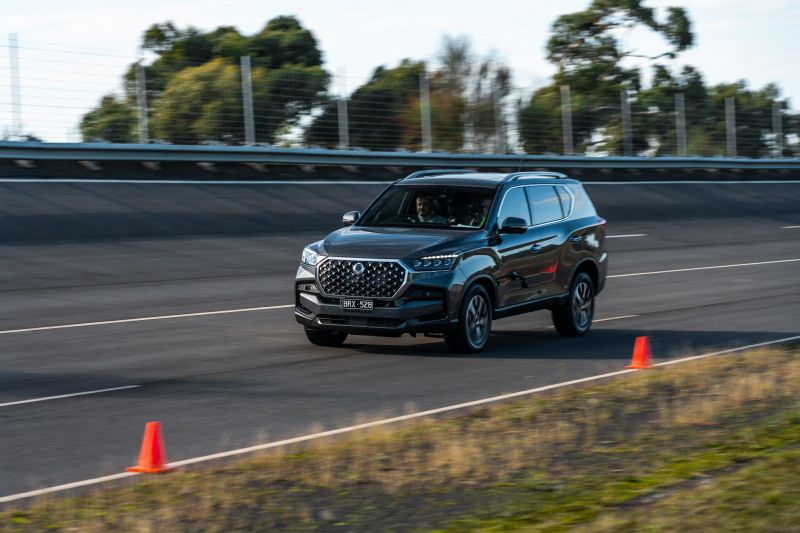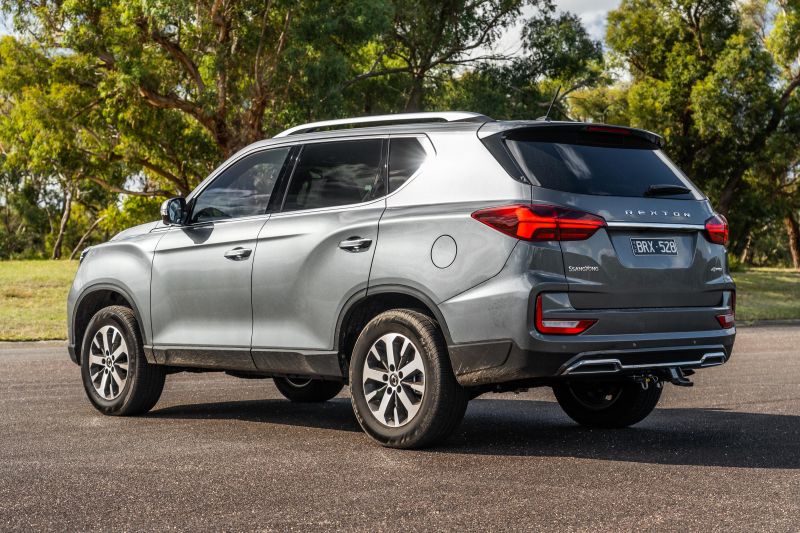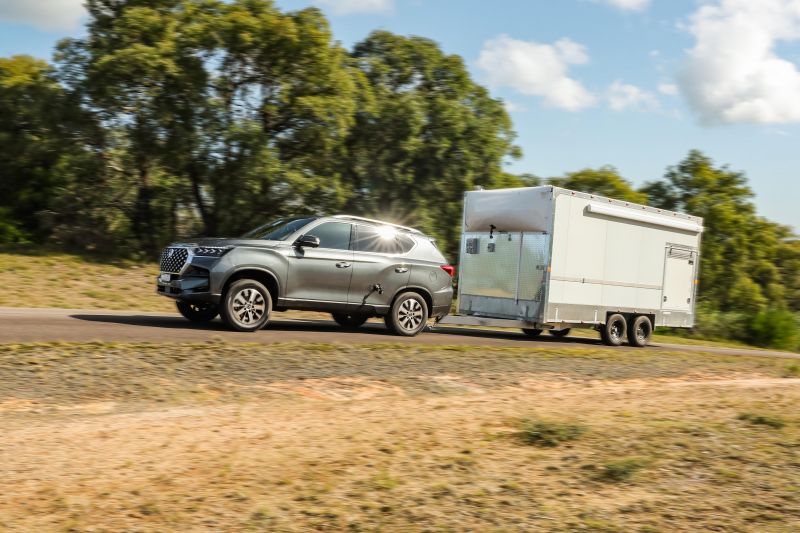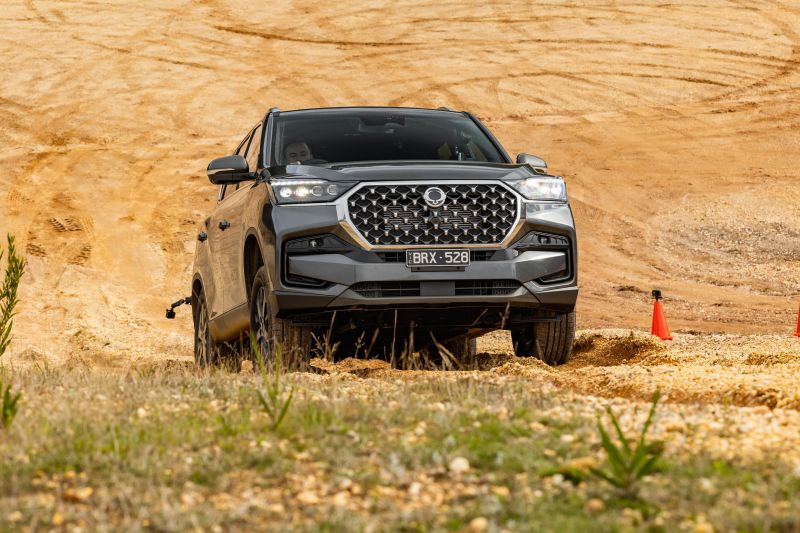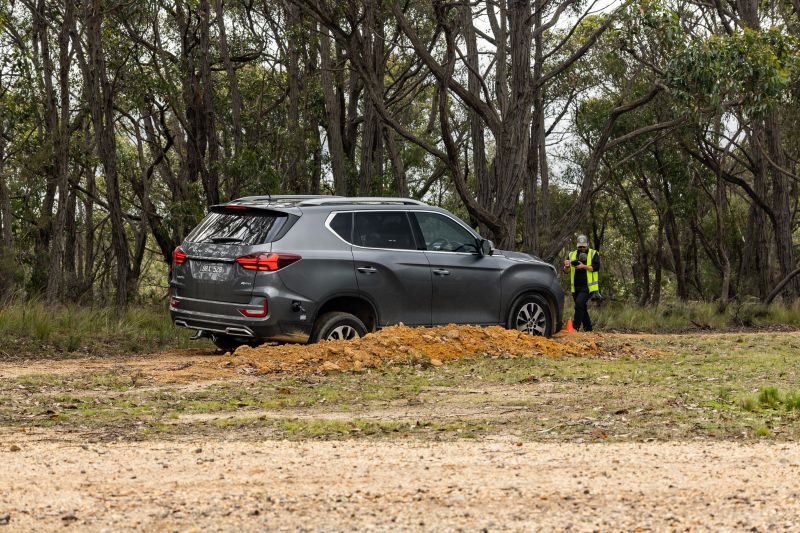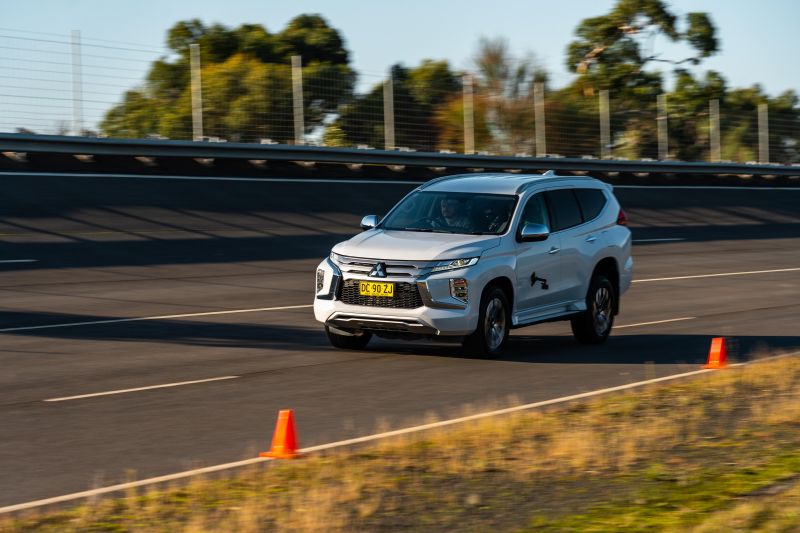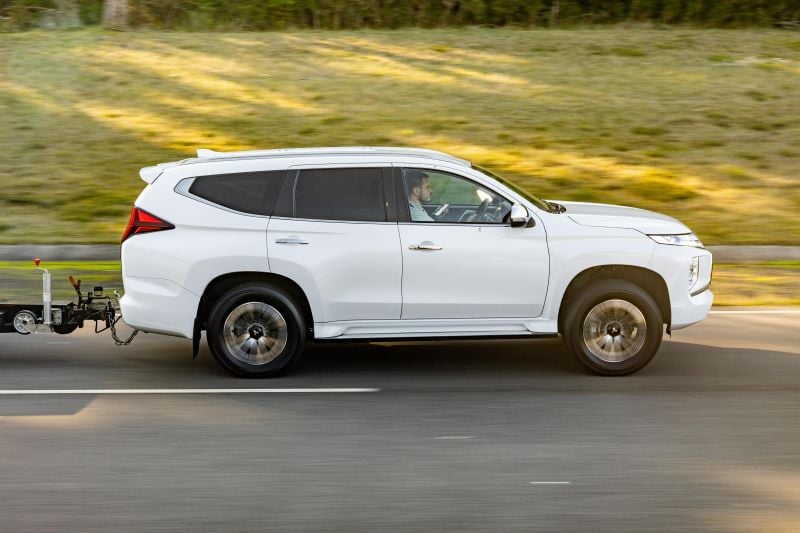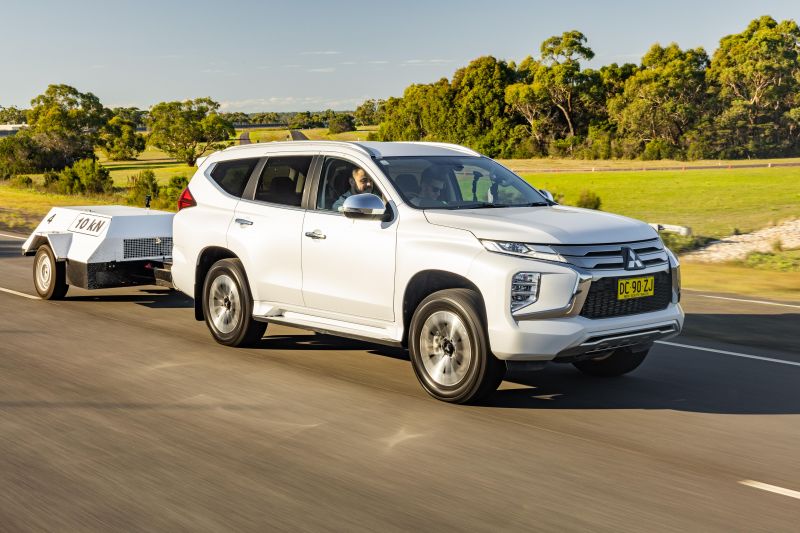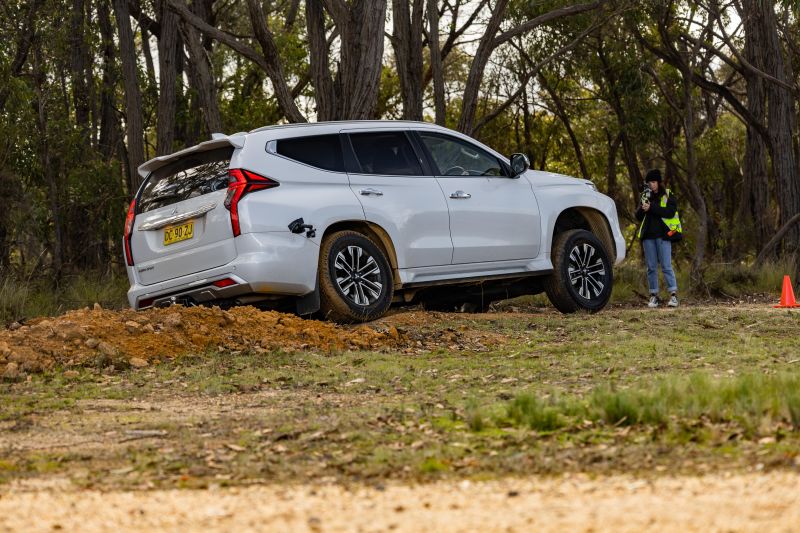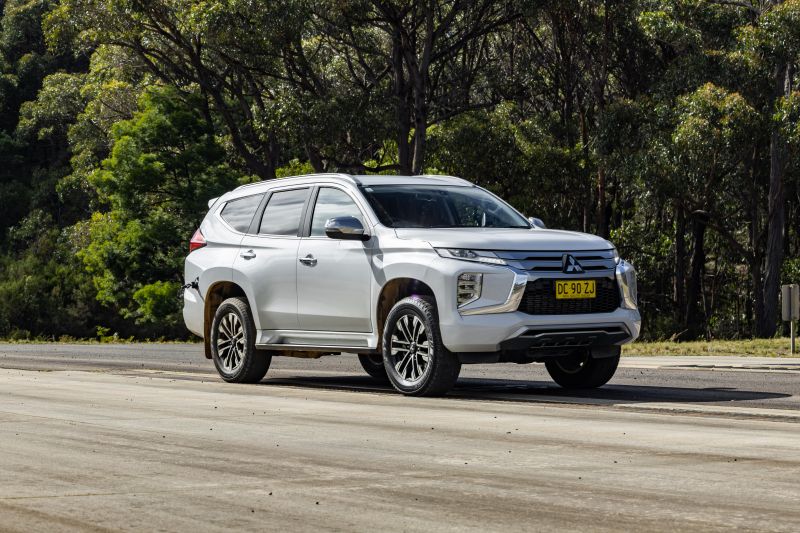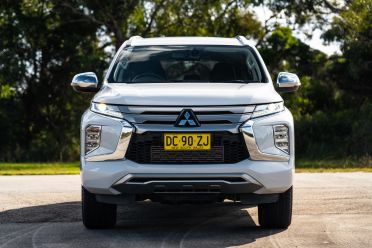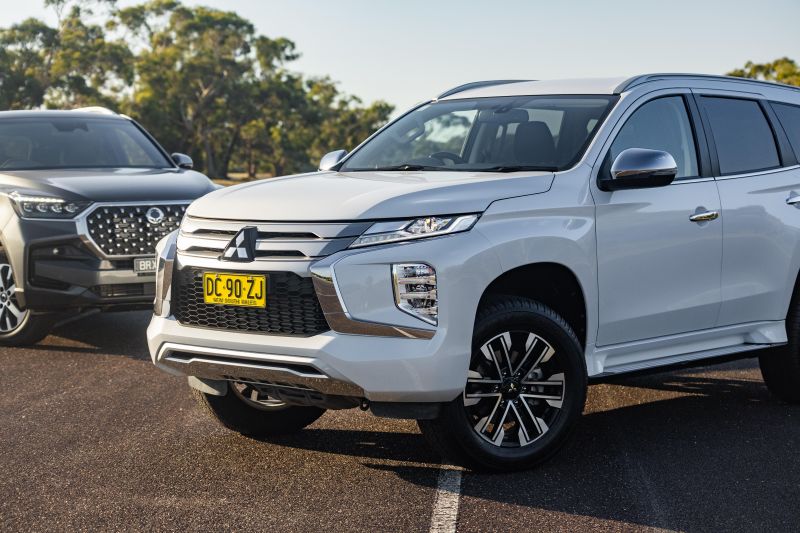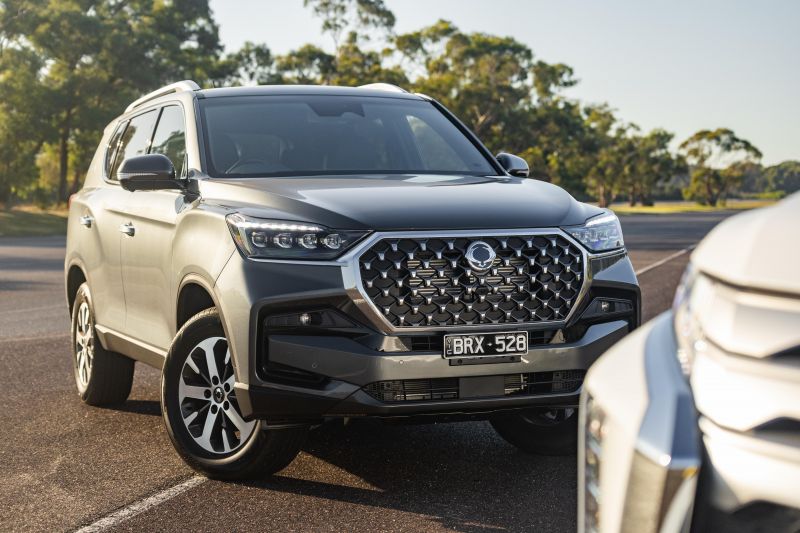The prices of large, body-on-frame SUVs like the Toyota LandCruiser Prado, Ford Everest and Isuzu MU-X prove little impediment to their sales.
The trio are the strongest-selling vehicles in their segment, with the Prado sitting at the very top. For buyers who want to carry seven people in total, or tow a boat or go off-road, they’re all compelling choices.
But what happens if you want to do those things in a new SUV, but don’t want to splash out as much cash?
Mitsubishi remains a top-10 brand in Australia because it has a solid reputation, and because the company knows what enticements to dangle. It might not always have the latest and greatest in product and technology, but it has the longest warranty in the business (with a condition), as well as prices that undercut other Japanese rivals.
That applies to the Pajero Sport, which like the MU-X and Everest is a body-on-frame SUV derived from a ute – in this case, the Triton, of which a replacement is due next year.
The Pajero Sport first arrived here in 2015 as a replacement for the also Triton-based Challenger, and with the demise of the venerable, unibody Pajero off-roader in 2021 now serves as the brand’s flagship SUV.
SsangYong is a perennial challenger brand. Despite having sold vehicles here since the 1990s, it seems consistently overlooked by the buying public, many of whom don’t even seem to realise it’s Korean and not a Chinese brand.
With its new corporate parent dropping the SsangYong name in other markets for the even less catchy KG Mobility – no, they’re not switching to selling scooters for retirement villages – the brand has a chance to make a splashy relaunch… or languish in obscurity.
In fairness, sales of the Musso ute and the Rexton SUV it was spun off from are on the rise. But almost twice as many people this year have bought an LDV D90, from a brand even newer to Australia offering a shorter warranty.
The current Rexton, which entered production in 2017, is getting an update later this year. This will bring a new 12.3-inch touchscreen and various cosmetic tweaks, but we don’t yet know what price increases, if any, this update will bring.
While we don’t have a D90 on test, we wanted to see which vehicle from this set of more affordable body-on-frame SUVs is best.
Is it worth paying extra for something like an MU-X? Or do these cut-price SUVs epitomise the old Bi-Lo slogan of “Why Pay More?”
How much?
Here we have a mid-spec Pajero Sport up against a top-spec Rexton.
Despite this, the Rexton Ultimate is still cheaper, with a price tag of $56,585 drive-away.
An ivory/brown interior is a $500 option, while a $2000 Sport Pack brings shadow chrome exterior trim, black roof rails, unique fog lights, and black 20-inch alloy wheels.
Our Rexton came with the optional Performance Suspension Kit, priced at $1540, bringing our tester’s drive-away price to $57,530.
The Pajero Sport GLS 4×4 is priced at $55,190 before on-road costs, or $58,240 drive-away based on a New South Wales postcode.
Premium paint isn’t included like in the Rexton, and adds an extra $740-940. You can also add a Deluxe package for $2250, but our tester wasn’t equipped with this.
What do you get?
The Rexton comes standard with the following equipment across the range:
- Automatic LED headlights
- 18-inch alloy wheels
- Rain-sensing wipers
- Cruise control
- Dual-zone climate control
- Heated and ventilated front seats
- Heated rear seats
- Eight-way power driver’s seat
- Six-way power passenger seat
- Leather-wrapped steering wheel
- Tilt and telescopic steering wheel adjustment
- 12.3-inch digital instrument cluster
- 8.0-inch touchscreen infotainment system
- Wired Android Auto and Apple CarPlay
- DAB digital radio
- Six-speaker sound system
- Keyless start
Opting for the Ultimate also brings:
- 18-inch ‘diamond-cut’ alloy wheels
- Privacy glass
- Front and rear fog lights
- Sunroof
- Speed-sensitive power steering
- Nappa leather upholstery
- Second-row air-conditioning vents
- Heated steering wheel
- Driver’s seat and door mirror memory
- Power tailgate
- Keyless entry with walk-away auto-door locking
- Wireless phone charger
- Ambient lighting
- Illuminated front door sill plates
All Mitsubishi Pajero Sport models come standard with the following equipment:
- 18-inch alloy wheels
- LED headlights, front fog lights and cornering lights
- 8.0-inch touchscreen infotainment system
- Wired Android Auto and Apple CarPlay
- DAB digital radio
- Tilt and telescopic steering wheel adjustment
- Keyless entry and start
- Leather-wrapped steering wheel
The GLS gains:
- Automatic headlights
- Rain-sensing wipers
- Dual-zone climate control
- Electrochromatic rear-view mirror
- Six-speaker sound system
- Satellite navigation
The GLS features cloth upholstery, though an optional Deluxe package brings leather upholstery and power adjustment for the front seats.
Are they safe?
The Rexton has never been tested by ANCAP in its current generation, nor has its Musso ute sibling.
The Pajero Sport, in contrast, had a five-star rating based on testing conducted of the related Triton ute in 2015, however this has now expired. We feel more confident with an expired five-star rating than none at all.
Both vehicles come standard with the following safety equipment:
- Autonomous emergency braking
- Tyre pressure monitoring
- Front and front-side airbags
- Driver’s knee airbag
- Rear parking sensors
Only the Pajero Sport’s curtain airbags extend to the third row, while it also uniquely offers adaptive cruise control. A surround-view camera is also available in the optional Deluxe package.
The Rexton, however, comes standard with blind-spot monitoring, front parking sensors, lane-departure warning and rear cross-traffic alert.
What are they like inside?
Rexton
The SsangYong’s interior blows the Mitsubishi’s away in terms of presentation.
It might look a few years old itself, but it looks like a much higher class of car.
Diamond-patterned, leather-look trim extends across the dashboard, enveloping the climate control array. Attractive metal-look trim provides contrast, with gloss black trim kept to a minimum.
The dash top – apart from a small piece above the centre stack – is finished in soft-touch plastic, as are the tops of the doors. The fairly wide if not overly deep centre console bin also has a particularly plush lid.
There’s quilted leather on the dash and doors; more metal-look trim on the centre console, paddle shifters and speaker grilles; and a lovely knurled dial for four-wheel drive mode selection.
There’s been no skimping further back in the cabin, either, with soft-touch trim used on the rear doors.
Some of the details like the switchgear and the handy redundant passenger seat controls, located within arm’s reach of the driver, even remind me of my own Hyundai Genesis. Actually, the metal-look switches on the steering wheel are even nicer than the plastic pieces in my own car.
Subtle ambient lighting is the cherry on top in a genuinely classy interior. We didn’t experience any build quality issues apart from an occasional, minor rattle somewhere behind the driver’s seat.
Short people are going to struggle with the Rexton, though. There are no side steps as standard, though you can buy genuine SsangYong accessory steps for an extra $1040 including fitting. What you can’t add, however, are grab handles to the A-pillars. The Mitsubishi, in contrast, comes standard with these steps and handles.
Those seats look upscale, but they’re also quite firm – perhaps too much so for a family car.
The steering wheel looks and feels premium and feels good. The Rexton will also remember your heated steering wheel setting upon restarting the vehicle, though it doesn’t do the same for the heated and ventilated seats.
Also, a reminder: SsangYong puts its indicator stalk on the left-hand side of the steering column.
The infotainment system is slightly less dated-looking than the Mitsubishi’s, but it still has its flaws.
The screen is very washed-out and camera quality is average, though the button to manually toggle the cameras is easily accessible.
There’s no embedded satellite navigation, a drawback if you’re travelling somewhere with poor phone reception.
At least there’s smartphone mirroring, but for some inexplicable reason, Android Auto in SsangYong products repeatedly flings my location to somewhere in the Bass Strait.
Another gripe shared with the Musso is the sticky start button that needs a solid prod.
There’s less storage up front than the Pajero Sport, with no shelf under the centre console. The bottle holders in the doors will still accommodate 1L bottles, however.
Step into the second row and headroom is impacted by the single-pane sunroof up front. Nevertheless, there’s still plenty of room in every direction, along with air vents, two USB-A outlets and a 12V outlet. There are also two ISOFIX and three top-tether anchor points in the second row, albeit none in the third.
To access the third row, all you need to do is pull a lever and the second-row seat folds flat then tumbles forward.
In terms of third row comfort, the Rexton falls slightly short of the Pajero Sport. Like in the Mitsubishi, my head brushes against the roof (I’m 180cm tall, for reference) and there’s just enough toe room, but the bench feels very low and the window area is smaller so it’s a bit gloomier.
There’s no curtain airbag coverage back here – they only extend across the first and second rows – while there are only vents on one side and little in the way of amenities.
There’s a board in the boot area to maintain the flatness of the load floor when you drop the third row. Doing so expands total luggage space from 236L to 641L, while dropping the second row expands this to 1806L. A full-sized spare wheel is located underneath the vehicle.
The inclusion of a rear washer jet and wiper is welcome, but we wish the power tailgate also had a lock button in addition to the close button.
The key fob has a couple of extra buttons compared with most rivals, however: one can be held down to turn on the headlights, while the other is an old-school panic button.
Pajero Sport
Who needs a time machine, when the Mitsubishi Pajero Sport can take you back to 2015?
Inside, the Pajero Sport feels sturdy yet stodgy, hard-wearing yet… hard. It’s more Triton wagon than premium SUV and, though it has a different dashboard design to the Triton it’s based on, it’s ute-like inside and dated in appearance.
Let’s start with the good. The leatherette padding on the sides of the centre console is a welcome touch, while the dashboard design is neat and inoffensive with the touchscreen and climate controls easy to see and reach.
There’s some cloth trim on the doors, but otherwise this is a sea of hard plastic – a stark contrast with the plush Rexton.
The steering wheel is supposedly leather, but it feels like plastic to us. It’s a shame, as the actual size of the wheel and the layout of its switchgear is sound.
The GLS does without the slicker digital instrument cluster of its pricier Exceed sibling, however, and the small colour screen between the (admittedly decent) analogue gauges is lacking a digital speedometer.
The infotainment system’s graphics are dated, though at least you don’t have to look at them if you plug in your phone. This system is feeling very old, and though it helpfully includes touch-capacitive shortcut buttons below they lack haptic feedback. The reversing camera footage is also extremely washed out.
At least there’s factory satellite navigation, something the Rexton doesn’t have. It’s not standout, mind you, but it’s there.
Pie tray-like climate control knobs, 1980s-looking seatbelt warning, and 2000s-looking orange backlighting mar the ambience.
The front seats have some bolstering to them and are upholstered in soft cloth trim, but they feel a bit cheap. They also feel narrower than those in the Rexton; indeed, the entire cabin feels less wide.
In terms of storage, there’s a handy shelf under the centre console, as well as a fairly deep centre console bin and bottle holders in the doors that can fit 1L bottles.
Step into the second row and you’ll find there’s enough room for most adults, though seating three abreast may prove a challenge.
Air vents are found on the roof for both second- and third-row occupants. There are none at the base of the centre console, though you’ll find a USB-A outlet plus a 220V AC outlet.
There are also three top-tether and two ISOFIX anchor points in the second row for child seats, but none for the third row.
As with the Rexton, the second row doesn’t slide. However, it’s split 60/40 and will quickly tumble forward with the simple pull of a lever.
Step into the third row, and it’s similar dimensionally to the Rexton. There’s less toe room than its rival but it feels airier due to a larger window area, while headroom is a match.
At 180cm tall, my head was touching the ceiling, but knee room was acceptable. There’s a single 12V outlet, plus cup holders.
With all three rows of seating up, there’s just 131L of cargo space, enough for a single suitcase… if it’s not too big.
Cargo space expands to 502L with the third row dropped, and 1575L with the second row dropped.
The Pajero Sport features a full-sized spare wheel and a rear wiper and washer.
What’s under the bonnet?
Rexton
The Rexton is powered by a 2.2-litre turbo-diesel four-cylinder engine producing 149kW of power at 3800rpm and 441Nm of torque between 1600 and 2600rpm.
We recorded a 0-100km/h time of 11.09 seconds, quicker than the Mitsubishi.
It’s mated with an eight-speed automatic transmission and a part-time four-wheel drive system with selectable 2H, 4H and 4L modes and an automatically locking rear differential.
Over a mix of inner-city, suburban and highway driving, we averaged 8.6L/100km, slightly thirstier than the Pajero Sport. But in testing at our proving ground, conducted back-to-back with the Pajero Sport in identical conditions, we averaged 8.1L/100km, which was thriftier.
The official combined cycle claim is 8.7L/100km, and the Rexton has a 70L fuel tank.
The Rexton has a braked towing capacity of 3500kg.
Pajero Sport
The Pajero Sport is powered by a 2.4-litre turbo-diesel four-cylinder engine producing 133kW of power at 3500rpm and 430Nm of torque at 2500rpm.
It’s mated with an eight-speed automatic transmission. Mitsubishi’s Super-Select II four-wheel drive system features a full-time four-wheel drive mode as well as selectable low- and high-range gearing and a locking rear differential.
We recorded a 0-100km/h time of 12.61 seconds, the slowest of any vehicle at our 4WD SUV of the Year competition.
Over a mix of inner-city, suburban and highway driving, we averaged 8.3L/100km. In testing at our proving ground, we averaged 9.2L/100km.
The official combined cycle claim is 8.0L/100km, and the Pajero Sport has a 68L fuel tank.
The Pajero Sport has a braked towing capacity of 3100kg.
How do they drive?
Rexton
On bitumen, the Rexton comprehensively outshines the Pajero Sport in almost every way, and it’s quite a good steer for a large, body-on-frame SUV.
The steering is direct and weighs up nicely, and overall the Rexton feels more nimble than the Pajero Sport.
It’s not as agile as a car-based crossover, with plenty of body roll in corners, but it feels more planted than the Pajero Sport on a winding country road. Meanwhile, back in town the nicely weighted steering means it’s a lot less daunting to park.
It’s more responsive than the Pajero Sport, getting up to speed briskly thanks to plenty of low-end torque, and it has an equally smooth-shifting transmission to its Japanese rival.
You can put it in Power mode but this holds onto gears for a little too long; Normal mode is plenty responsive. Alternatively, you can manually change gears using the paddle shifters.
We like the paddles, but the gear shifter is finicky and just doesn’t feel intuitive to use.
The parking brake is applied automatically when you shift into park, while the Rexton remembers if you had auto hold activated when you restart the vehicle. The latter’s operation is a bit clunky, however – there’s a bit of a lurch as the system deactivates the parking brake.
Our Rexton came equipped with an optional Performance Suspension Kit, with coil springs front and rear and nitro gas shock absorbers. The spring rate is upgraded to 0-50kg at the front and 0-200kg at the rear.
While we didn’t have a stock standard Rexton to compare it with back-to-back, equipped as our tester was the Rexton offers a generally comfortable ride.
It can be a tad terse, with a more constant yet ultimately mild patter on poorly surfaced roads and a bit of fidgeting over tram tracks. It’s never uncomfortable, however, and impacts are absorbed much more smoothly than in the Mitsubishi with no pronounced body-on-frame judders.
Disappointingly, there’s no adaptive cruise control like in the Korean-market Rexton, while there’s only lane departure warning and no active lane-keep assist. In contrast, the Pajero Sport has no lane systems whatsoever, but does have adaptive cruise control.
The Rexton’s cruise control wouldn’t hold to a set speed when going downhill, while the lane departure warning defaults to on and proved pretty annoying.
Helpfully, the Rexton remembers your auto-hold setting upon restarting the vehicle, while the Pajero Sport suffers from amnesia.
We took sound readings for the Rexton and Pajero Sport as part of our 4WD SUV of the Year competition, and the SsangYong was demonstrably quieter than not only the Mitsubishi, but also rivals like the Toyota Fortuner, Ford Everest Bi-Turbo and Isuzu MU-X in most of our testing scenarios. You can view a full breakdown here.
It has a bit of a weedy engine note, but the cabin is well-insulated even at highway speeds.
We also tested the towing and off-road abilities of the Rexton and Pajero Sport.
The Rexton couldn’t hold speed with our trailer attached and the cruise control activated, causing it to gradually slow from 100km/h to 70km/h.
We had it hooked up to a 2800kg trailer and found that going down a steep hill we needed to slow the Rexton to 60km/h to have it shift into second gear for optimum engine braking. Uphill, in contrast, we needed to have our foot welded to the floor to make progress.
We also couldn’t reach 100km/h with a 1600kg trailer dynamometer hooked up. The Rexton was quicker to 90km/h, however, at 18.79 seconds versus 23.24 seconds for the Pajero Sport.
On the plus side, the optional suspension upgrade saw the Rexton nicely balance comfort and body control when towing.
Off the beaten track, the Rexton has an automatically locking rear differential that allows you to crawl out of sticky situations. However, we found it engaged quite sharply, and the driver has no control over when it engages or disengages.
It did engage at appropriate moments, including when we tried to tackle Mogul Mountain – a 30 per cent gradient rutted hill – in the Rexton. We were able to clear this obstacle, but Gravel Mountain, a 45-degree incline, proved insurmountable: we only got a third the way up on all three attempts.
We also had to mark the hill descent control down for its rather sloppy operation. It allows the vehicle to go too fast and then has to abruptly correct, instead of affording smooth progress all the way down.
The Rexton has an approach angle of 20.5 degrees, a departure angle of 20.5 degrees, and a ramp breakover angle of 20 degrees. It has 203mm of ground clearance.
Pajero Sport
In addition to being slower, the Pajero Sport feels more agricultural than the Rexton on the road.
It’s noticeably gruffer, as even cruising down the highway with the engine revving at 1500rpm sounds louder than a Rexton at higher revs. It’s also noisier at idle.
The engine is adequate and no more, though the eight-speed automatic transmission shifts smoothly and unobtrusively. If you want to change gears manually, there’s a pair of genuinely lovely metal paddle shifters behind the steering wheel.
The steering feels heavier at low speeds but lighter and more vague at high speeds.
It adds to a more ponderous feel overall than the Rexton, with the Pajero Sport feeling more top-heavy and awkward in corners.
Ride comfort also falls short in comparison. Hit a bump and a shudder is sent through the structure, and the SUV gets jostled around more on more poorly surfaced roads.
The lack of any kind of lane assist system is baffling: Mitsubishi will sell you a Triton with lane-departure warning and a Pajero Sport with adaptive cruise control, but there’s no way to get both features in both cars.
The presence of adaptive cruise control makes the Pajero Sport less of a strain than the Rexton to drive at highway speeds (except on your ears). The LED headlights also appear brighter.
The Pajero Sport isn’t a superior tow vehicle to the Rexton.
While engine braking in third gear was excellent and those lovely paddle shifters make changing gears a breeze, it struggled mightily when hooked up to a 2800kg trailer and dispatched up a steep hill.
It struggled to break 50km/h at full throttle, though the transmission was clever enough to stay in the right gear. With our 1600kg trailer dynamometer hooked up, the Pajero Sport couldn’t hit 100km/h.
The Pajero Sport also felt floatier at the rear compared to the Rexton with its suspension upgrade.
We’re a bit surprised more companies haven’t followed Mitsubishi’s suit in offering a four-wheel drive system in their off-roaders with a mode suitable for driving on sealed surfaces.
Mitsubishi has offered four-wheel drive systems with this capability for decades now, and it’s handy for when the road starts to get a little wet. Where the Rexton can’t be operated in four-wheel drive on paved roads, even if they’re wet, the Pajero Sport offers an extra degree of security.
Not only does the Mitsubishi consequently inspire more confidence on sealed surfaces, it’s also superior when you get off the beaten track.
It tackled offset moguls with a minimum of fuss, even in road-oriented 4A mode; knocking it into 4H and Mud Mode made it even more effortless.
Hill descent control was smoother in operation than the Rexton, and it was able to tackle Gravel Mountain on its second attempt with the rear differential locked – though there was some rev flaring.
The only blot on its record was its performance in our flex test, where we try to open and close the door with two wheels on the ground and two wheels in the air. In this, the door caught slightly on the body.
The Pajero Sport has an approach angle of 30 degrees, a departure angle of 24.2 degrees, and a ramp breakover angle of 23.1 degrees. It has 218mm of ground clearance.
While the Pajero Sport may feel more crude on the road, it does have adaptive cruise and that full-time four-wheel drive mode up its sleeve, and it’s better off the beaten track.
Cost of ownership
The Rexton is backed by a seven-year, unlimited-kilometre warranty.
The first seven services are capped at $375 each, with intervals of 12 months or 15,000km.
The Pajero Sport is backed by a five-year, 100,000km warranty, extending to 10 years or 200,000km if you service within Mitsubishi’s dealership network.
Doing so allows you to take advantage of 10 years of capped-price servicing, with intervals of 12 months or 15,000km. The first 10 services are capped at $449, $549, $499, $849, $549, $849, $549, $999, $699 and $899.
CarExpert’s Pick
The Pajero Sport feels sturdy but built to a price – a pity, then, that it’s more expensive to buy than the Rexton.
Its interior is dated and considerably less luxurious than the Rexton’s, while the Pajero Sport is also slower, noisier, rougher-riding and more cumbersome to drive than its cut-price Korean rival.
Sounds like this is a wipeout for the Mitsubishi, right? Not quite.
In addition to offering adaptive cruise control, if not some of the SsangYong’s active safety tech, the Pajero Sport boasts a superior four-wheel drive system that saw it perform better in our off-road testing, while its third row is slightly more hospitable.
Throw in that 10-year warranty and 10 years of capped-price servicing, not to mention a considerably wider dealership network and likely higher resale value, and there are still plenty of reasons to choose it over the SsangYong.
Nevertheless, if outright off-road ability isn’t your priority, the SsangYong is a much nicer family vehicle.
It’s better to drive, even if it doesn’t have an all-weather, on-pavement 4WD mode. It’s more refined, while its interior is properly lush and puts not only the Pajero Sport to shame but also other ute-based SUVs, though its infotainment system is no better and lacks embedded satellite navigation.
It’s our choice, even if the Pajero Sport still has plenty of strengths.
MORE: Everything SsangYong Rexton
MORE: Everything Mitsubishi Pajero Sport

